Veterans Affairs
Mururoa – 50 years on


Mururoa – 50 years on

3 Coronation of His Majesty King Charles III
4 Minister’s Message
5 Te Arataki update
Kia Eke
6 Mururoa 50th Anniversary
8 Korean Veteran, Des Vinten
9 Korean War Commemoration
10 Forums’ Report
11 Viet Nam Veterans and Families Trust
12 Invictus Games, Soren Hall
14 Commemorative Fund, the Ettie Rout Commemoration
15 Montecillo Veterans Home & Hospital
16 Processing Times
The Veterans’ Affairs magazine is published three times a year by Veterans’ Affairs – Te Tira Ahu Ika a Whiro.
The views expressed in this publication are not necessarily those of Veterans’ Affairs or the New Zealand Defence Force. ISSN 2816-1319
www.veteransaffairs.mil.nz
veterans@nzdf.mil.nz
0800 483 8372 (Freephone New Zealand)
1800 483 837 (Freephone Australia)

+64 4 495 2070 (rest of world)
Veterans’ Affairs
PO Box 5146
Wellington 6140 New Zealand
Since our last issue, we have successfully delivered our veterans’ forum in Manawatū-Palmerston North. The weather held and we welcomed over 350 veterans and whānau through the doors of Barber Hall on a sun-shiny day. Since recommencing the inperson forums, following the relaxing of Covid-19 protections, almost 1,000 veterans and whānau members have attended these events in Christchurch, Auckland and Palmerston North, and almost 400 veterans and whānau from across Australia and New Zealand registered to watch our virtual online forums. Each event has been a great opportunity to hear from our veterans about the issues that matter most to them. We now pause our face-to-face forum programme as winter sets in but we will be back on the road towards the end of the year. Keep an eye on our website and Facebook page for upcoming events.
This is also a great time to welcome Alex Brunt to our Veterans’ Affairs family. Alex is our new Deputy Head of Veterans’ Affairs coming to us from a secondment at the Social Wellbeing Agency where he was the Deputy Chief Executive Policy, Data and Insights. He was seconded there from the Ministry of Education, where he was the Deputy Secretary, Evidence, Data and Knowledge.
Alex has more than 15 years of senior leadership experience, inside and outside of the public sector. Alex is data literate in both qualitative and quantitative methodologies, including using Statistics NZ’s Integrated Data Infrastructure (IDI) which will greatly assist us with the Te Arataki Action Plan and work programme (mentioned later in this issue).
Alex has experience in statutory decision-making and working in semijudicial bodies. As General Manager of Water Safety New Zealand, he participated in drowning reviews, police prosecutions and coronial hearings. As the New Zealand Country
Manager for a medical college (Radiology and Radiation Oncology) he worked with the Medical Council of New Zealand on complaints and investigations into clinicians under the Health Practitioners Competence Assurance Act and the assessment of international medical graduates. Alex has joined the team at Veterans’ Affairs knowing he can make a real difference for veterans, and to be part of recognising the service that our veterans have rendered for our country.
In closing I want to acknowledge the passing of one of our former Veterans’ Affairs staff members, Casidhe Maguire, who passed away in July following an accident in Wellington. Casidhe came to Veterans’ Affairs in 2015 having spent some time before that relieving as an early childhood teacher. She started in Veterans’ Affairs as a business support administrator and then moved to our Enquiry Line where she was a popular member of the team, and also with those from across our veteran community. While at Veterans’ Affairs, Casidhe showcased her artistic ability as she designed birthday cards for veterans.
In July 2018 Casidhe left us for a working holiday in the UK – she ended up providing phone-based customer service for the RAF Benevolent Fund, before returning to Aotearoa. Casidhe leaves behind her partner, a precious one year old, and her extended whānau. Our thoughts and condolences are with them all. Moe mai rā Casidhe.
Until next time, stay safe and take care of each other.
Marti Eller Acting Head of Veterans’ AffairsIn front of the eyes of the world, the New Zealand Defence Force contingent marched through central London as part of the historic Coronation of His Majesty King Charles III on Saturday May 6.

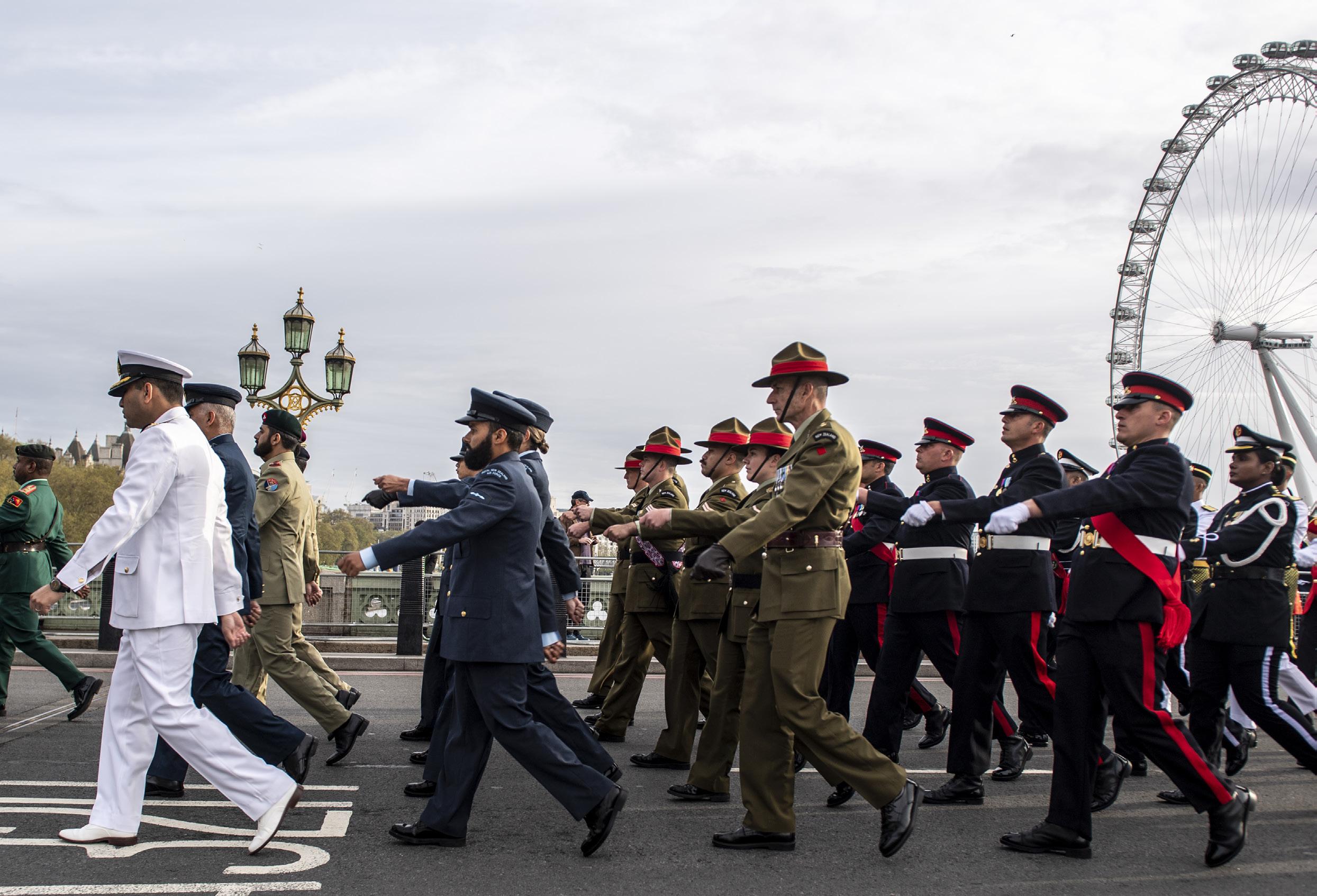
The New Zealand Defence Force contingent marched alongside members of the UK Armed Forces and personnel from across the Commonwealth in the return procession from Westminster Abbey to Buckingham Palace. More than 7,000 personnel from 40 nations were involved in the spectacle.
NZDF Contingent Commander Major Mike Beale said it was a pleasure to have led the young and diverse group.
“A lot of hard work and discipline went into this by some exemplary sailors, soldiers and aviators. I, like many in the contingent, was proud to have the
opportunity to participate in such an historic event.
“The professionalism demonstrated by our hosts in preparing for a parade of such a scale has been of the highest level, mixed with good humour. The professionalism of the Commonwealth troops from 40 countries, all with slight variations in their drill, has enabled us to achieve a standard befitting of being at the head of the procession.”
As a former Minister of Defence, the Veterans Portfolio isn’t new to me. It feels fitting that after being in that role, I am now able to ensure that those who have served are being looked after once their careers in the New Zealand Defence Force have come to an end.
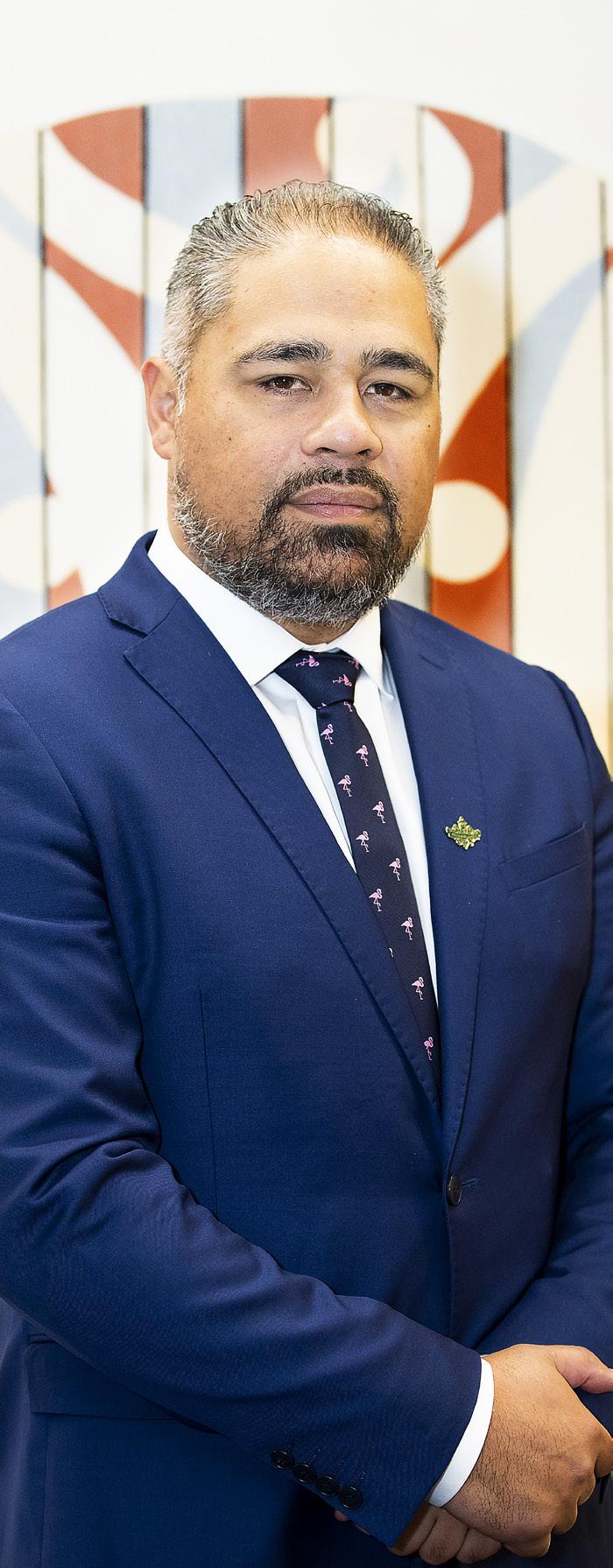
In one of my first engagements as your Minister for Veterans I had the honour of attending the Mururoa 50 year Commemoration Dinner. The commemoration was a humbling experience for me, and I cherish getting to spend time with a fantastic group of veterans.
Back in 1973, New Zealand sent two frigates to stand off Mururoa Atoll to protest the conducting of atmospheric testing of nuclear weapons. Those on the vessels were farewelled by the Prime Minister himself who told them the eyes of the world would be on them and their mission. The words of the medal, which our nuclear veterans received in 2002, tell the story –they served in difficult, adverse and hazardous circumstances.
As a Government, we tautoko alongside the Mururoa veterans. We are hearing you and your plea for further support which is why I have asked officials to look into how we do this, together. During these unprecedented times, we have the unique opportunity to ask ourselves ‘How can we better serve all veterans of Aotearoa New Zealand?’
For a number of years, our veterans have been covered for conditions that were known to be associated with exposure to nuclear radiation. This year, Aotearoa New Zealand took another look and I recently received a report that reviewed the most up-todate scientific information available on how nuclear radiation can damage health. There may be more we can do and I’m asking Cabinet to look at this. I have heard these concerns – and I will act.
There is more we can do – and not just for our nuclear veterans. Last year I launched Te Arataki – a policy framework designed to focus on the mental health and wellbeing of veterans and their whānau. I’m pleased to see that Veterans’ Affairs is continuing to lead this work and to encourage other departments and agencies to get involved and to look out for our veteran community.
“During these unprecedented times, we have the unique opportunity to ask ourselves ‘How can we better serve all veterans of Aotearoa New Zealand?’”
It was a very special opportunity for me to be given the Veterans portfolio recently. My whānau has a long-standing history with the New Zealand Defence Force, most notably, my Grandfather serving in the Māori Battalion during World War II.
Last year Veterans’ Affairs released Te Arataki mō te Hauora Ngākau mō ngā Mōrehu a Tū me ō rātou Whānau: The Veteran, Family and Whānau Mental Health and Wellbeing Policy Framework (Te Arataki).
Following its release, Te Arataki’s project team met with over 25 government and non-government agencies. For many of those agencies it was the first time they had participated in an in-depth discussion about veterans. From them we heard how much they want to show their respect for veterans and acknowledge them as a client group with specific needs.
The discussions then focussed on what they could do better to understand and improve the wellbeing of veterans and their whānau. A draft Strategic Action Plan was then developed and tested with key veteran groups, and now we have an agreed
In March 2023, NZDF adopted the Māori Strategic Framework, Kia Eke. Kia Eke aims to help shape NZDF so that can best serve all New Zealanders. It sets a direction for NZDF and signals the organisational shifts that are needed to ensure that NZDF is a committed partner to Te Tiriti o Waitangi | The Treaty of Waitangi.

The vision for Kia Eke is that the New Zealand Defence Force will become a bicultural defence force.

As part of NZDF Veterans’ Affairs | Te Tira Ahu Ika A Whiro will follow the guidelines and intent of Kia Eke. We have always respected Māori tikanga and Te Ao Māori, and following the NZDF’s ratification of Kia Eke, we will take further steps to develop our people so that they can thrive in environments that reflect Te Ao Māori, continue to improve our engagement
Strategic Action Plan with an initial work programme.
The actions within the work programme fit into three broad themes:
1. Investigating what we know about the mental health and wellbeing of Aotearoa New Zealand’s veterans, and the use of veteran identifiers. This is important because without data we can’t all plan together or work better together.
2. Better connecting with those veterans who may be missing out.
3. Educating/training public sector workers around veteran and whānau needs and responses, and ensuring that strategies, plans and service delivery align with, and support, Te Arataki. Some actions have already been implemented. These include, extending access to transition support so that it is available for up to two years after leaving the NZDF and bringing together a veterans network.
There’s a lot of work to do, but those discussions have already succeeded in putting veterans on the radar of a number of agencies who previously never considered them. Those actions and the overall response so far gives us a lot of encouragement that with Te Arataki we have a path to improve the mental and wellbeing of veterans.
and partnerships with Māori, recognise the value of Māori contributions to society, and encourage the use of te reo Māori.
We don’t know how many Māori are clients of Veterans’ Affairs. We’ve recently begun to ask our clients for their ethnicity, however we believe that it would likely reflect NZDF’s proportion, which is just over 17% of their workforce. It is important for us to reach and respect all eligible veterans and provide them a service that is respectful and personal to them.
Our magazine Veterans’ Affairs, and our email newsletter, will begin to incorporate more te reo. However, each time a te reo paragraph or article appears the English version will be alongside it.
Our aims are to meet our obligations to Te Tiriti o Waitangi and also, ensure that we are respecting and honouring
the Māori veterans that have served Aotearoa New Zealand.
Māku te rā e tō ana; kei a koe te urunga ake o te rā
Let mine be the setting of the sun; yours is the dawning of a new day.

The Mururoa Nuclear Veterans Group Inc. hosted a commemoration of 50 years since the Mururoa deployments. Their first event was at the Museum of the Royal New Zealand Navy, Devonport on the 7 July. Speakers included the Minister for Veterans, the Hon Peeni Henare, Sir Wayne Shelford President of the RNZRSA, and Deputy Chief of Navy Commodore Andrew Brown.

 Pete Elboum, Hon Peeni Henare Minister for Veterans, Gavin Smith, President, Mururoa Nuclear Veterans Group.
Pete Elboum, Hon Peeni Henare Minister for Veterans, Gavin Smith, President, Mururoa Nuclear Veterans Group.
It was recently the 50th anniversary of New Zealand’s protests against nuclear testing in the Pacific.
Following the Second World War, the Pacific was a regular atmospheric testing ground for the nuclear programmes of United States, Britain and France. In 1963, The US, UK and Soviet Union were signatories to a partial test ban treaty which sought to bring to a halt atmospheric testing, but allowed for underground testing. France refused to sign the treaty.
By 1966, France had begun atmospheric nuclear testing in French Polynesia. Mururoa Atoll had become the main location for these tests and there was increasing concern amongst Pacific nations of them.
During the 1972 New Zealand election campaign, the Labour Party headed
by Norman Kirk, had indicated their intention to send a frigate, with a cabinet minister aboard, to Mururoa to further the protest if they won the election. On 25 November, Kirk led Labour to victory with a majority of 23 seats.
Almost immediately, Royal New Zealand Navy staff began working on an operational plan for two frigates to be tasked to Mururoa. While a RNZN-led mission, the Royal Australian Navy lent the tanker HMAS SUPPLY to provide refuelling services and the Royal New Zealand Air Force and Royal Australian Air Force airlifted supplies to Rarotonga for ship replenishment.
On 28 June 1973, HMNZS OTAGO with 242 crew and the Hon. Fraser Colman, Minister of Immigration and Mines, made the 4,700 kilometre sail from the Devonport Naval Base to Mururoa

to protest the next series of tests scheduled for July.
Throughout the tasking, the French Navy’s Lockheed Neptune maritime patrol aircraft flew various patterns fully testing OTAGO’s radar, electronic warfare and IFF passive and active capabilities. On 21 July, a nuclear device was detonated at just over 1,000 feet. HMNZS CANTERBURY rendezvoused with OTAGO the following day and witnessed another detonation on 28 July.
The pressure brought about by the New Zealand Government protest, and mounting worldwide criticism, caused France to abandon atmospheric testing in 1974 and move to underground testing. A further 149 underground nuclear tests were to be conducted at Mururoa Atoll by France until their last one in January 1996.
He lied about his age, and enlisted at nineteen. He signed-up with friends to chase adventure, and on-board the ship from Wellington, Des and his friends toasted their luck at being sent to help the United Nations in Korea.

Thirty miles off the coast of the Korean Peninsula he could smell the Korean city of Busan. “The smell was the first thing we noticed. An acrid stench, the putrid air of a city under siege,” says Des.
He was deployed as a dispatch rider. “I had trained as a signaller in New Zealand and to start with I was in Seoul. There was plenty of action going on, and it was still pretty hectic for the people in the front line.”
After three months he was posted to the divisional headquarters just south of Imjin River. He drove a jeep on what were mainly dirt tracks to deliver his dispatches.
Once while waiting in his Jeep at the Division airfield for an I Corps courier, a shot-up American jet came in, landed, but overshot the field and crashed into jeep at the far end of the airstrip. Des ran to assist, but the pilot waved him back moments before the aircraft exploded.
4,700 New
The Korean climate is one of extremes. Very hot in summer and very cold in winter. Des remembers clearly those minus 24 degrees celsius winter nights and trying to keep warm inside his canvas tent. It left Des thinking that “War is hell, but winter is even worse.”
On Anzac Day 1952, after a few beers, Des and a Kiwi soldier who had enlisted in the Australian Army, were having some impromptu target practice across ‘no man’s land’ from an OP on 3RAR’s front, when they were found and subsequently disciplined. He was charged with ‘firing on the enemy without permission.’ Sometimes, shooting in the direction of the enemy, created more danger because the Chinese were very accurate with mortars fired in retaliation!
Des left Korea the day the truce was signed and went on to have a long career as a signaller in the New Zealand Army, retiring as a Warrant Officer Class One in 1976.
He had no intention of ever returning to Korea and thought that the war had been so intense that South Korea could never recover, but during his time as the National President of the New Zealand Korean Veterans
Association, he has visited Korea four times since his service in the Korean War.
“Walking back into that place it was unrecognisable, I wouldn’t have said we were in Seoul. I mean, now it’s a super-city – everyone is so much better off thanks to the United Nations, and the South Koreans have never forgotten that.
The current relations between North and South Korea are as strained as ever, but those who fought in Korea say that New Zealand’s involvement was worth it, and are proud to have helped South Korea become the modern, developed country that it is today.
“Everyone gave a lot for what I consider a small but significant gain for South Korea. Had it not been for what we did, it would have been a completely different story.”
Years later, the gratitude of South Koreans, both here, and on subsequent re-visits is still overwhelming.
Zealanders served as part of the New Zealand contingent – Kayforce – under UN command.
On Sunday 25 June at Pukeahu, National War Memorial, those who served Aotearoa New Zealand during the Korean War were honoured. 25 June marks 73 years since the Korean War began, and 2023 also marks 70 years since the signing of the armistice between North Korea and the
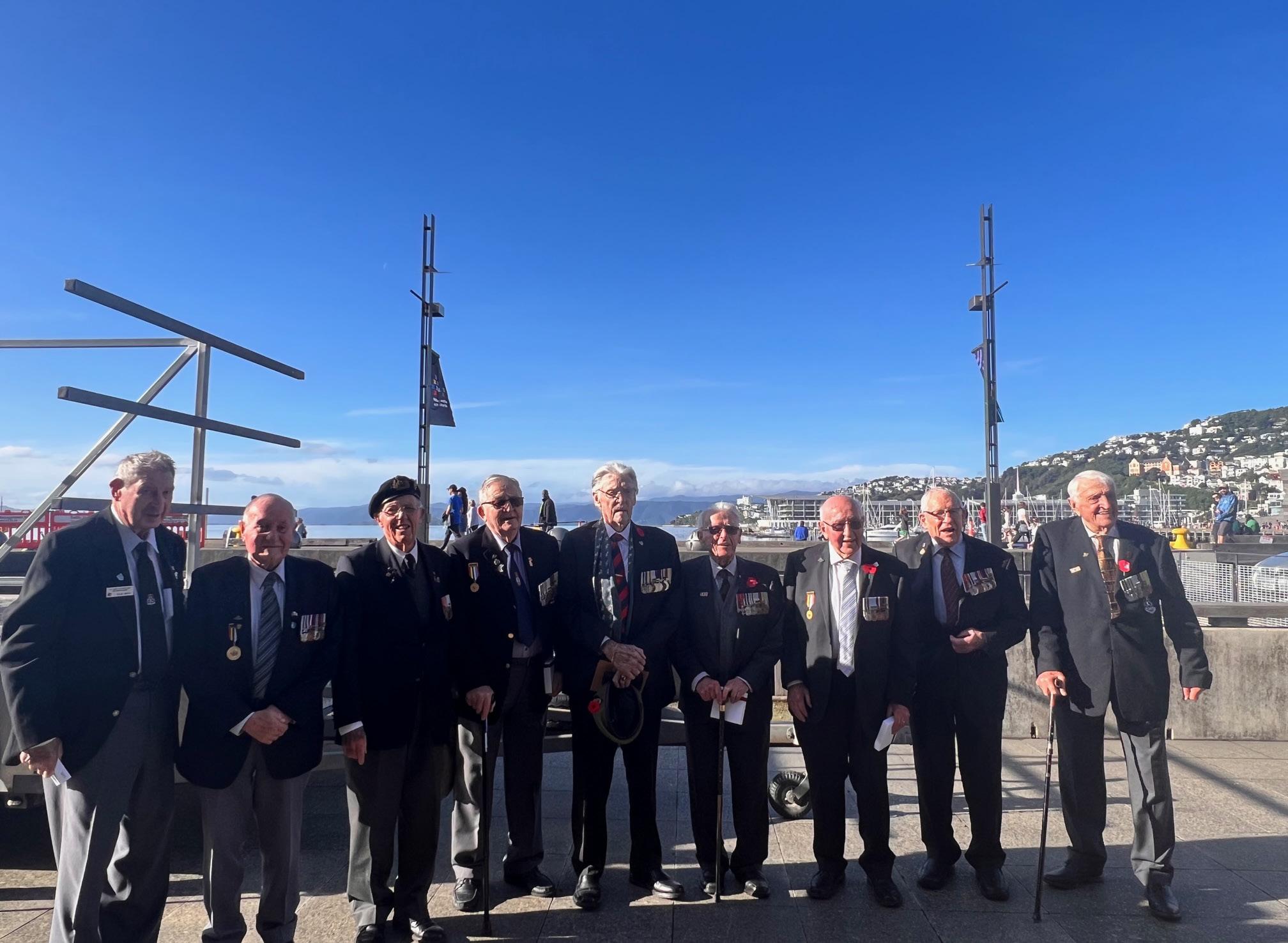
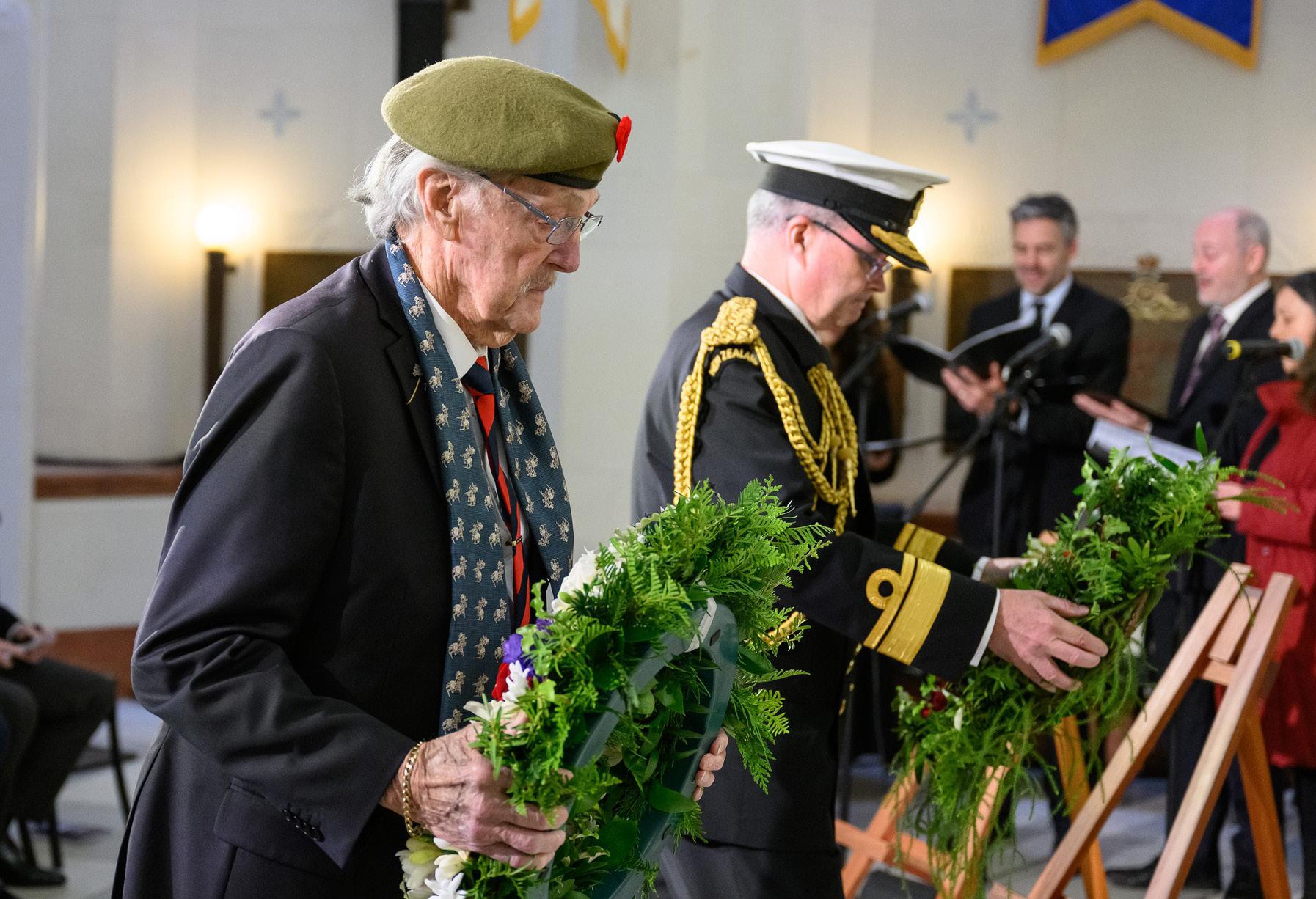
United Nations Command, calling for a ceasefire between North and South Korea. To this day, no peace agreement has been signed and armistice arrangements continue to be in force.
Around 6,000 New Zealanders served in Korea between 1950 and 1957 of
those 4,700 were members of the army’s Kayforce and 1,300 served on the six Royal New Zealand Navy frigates which were active around the Korean peninsula. Forty-five New Zealand servicemen, including two naval personnel, died in Korea and two others died while serving with Australian forces.
Already in 2023 we’ve met with over 600 veterans and their whānau face-to-face. We caught-up at the Tāmaki Makaurau Auckland and Manawatū Palmerston North forums.

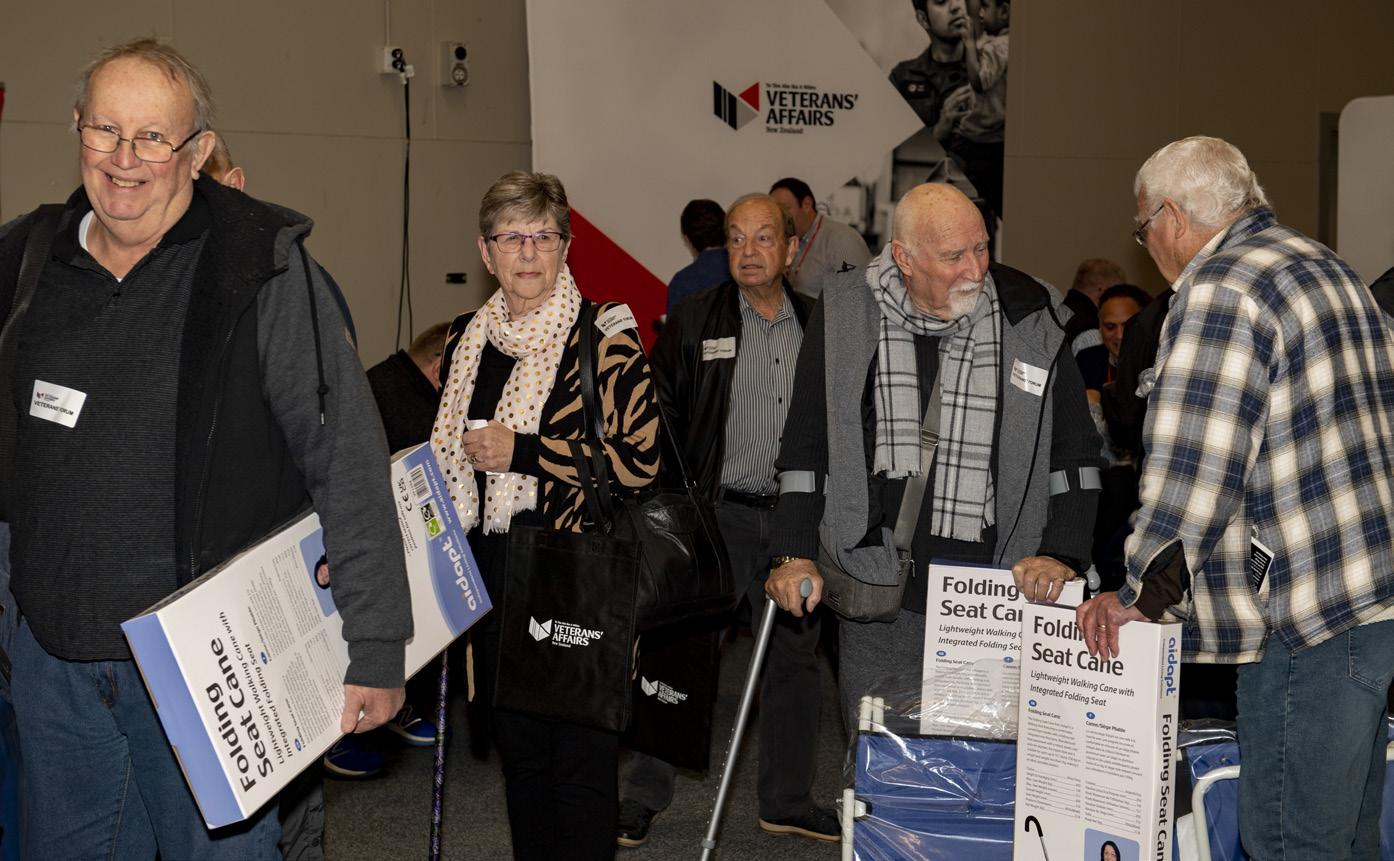
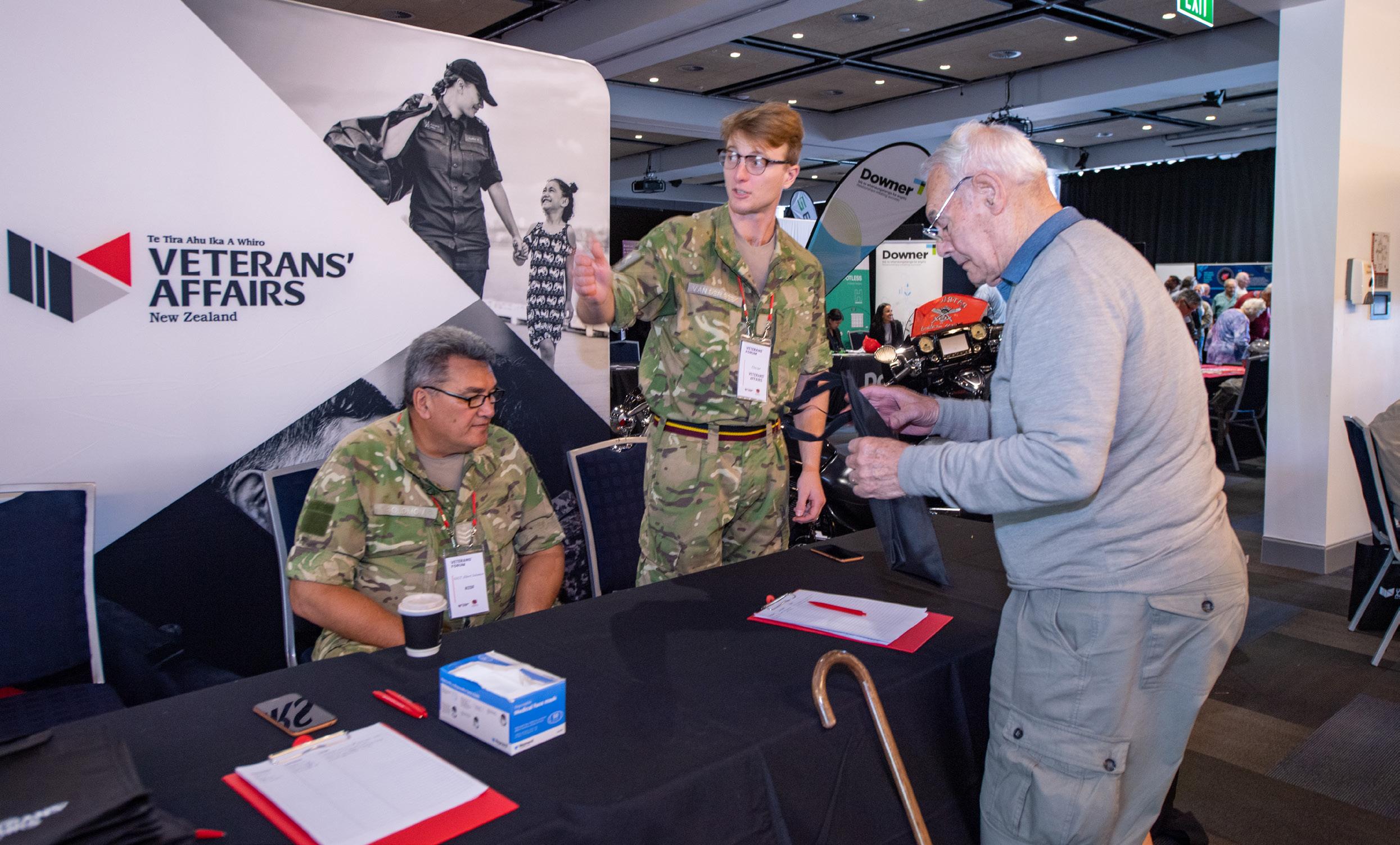
We also held two virtual forums. The first one in February was for kiwi veterans living in Australia. At that forum they heard about support from Veterans’ Affairs, as well as hearing from the Department of Veterans Affairs Australia, the Ministry of Social Development and Australian-based veteran advocate Wayne Lindsay. At our last online forum, we aimed to answer questions that were given prior to the forum.
We’re planning another face-toface and online forum before the end of the year. When we confirm the details for those forums we will publish them on our website, on our Facebook page and we will send them out via our email newsletter.
The Trust supports Viet Nam Veterans and their families who may be in hardship or poverty and makes grants which benefit the community Viet Nam veterans, and their families. Since 2007, over $4.5 million has been paid in supporting these purposes.
Overall, the aim is to help make day-today life easier for Viet Nam Veterans and their families. One-off grants may be considered for assisting with home repairs, home heating, practical items like a bed, unexpected debts or expenses, some medical expenses (e.g. orthodontic or optometrist costs) and travel to towards visiting a sick relative, hospital appointment, or unit reunion.
Consideration may also be given for some educational expenses, such as a one-off contribution towards schoolbooks, fees, school uniform, etc... Overall, the Trustees look to
provide benefits which improve someone’s life or well-being, particularly those in hardship. If you are unsure if you may qualify for assistance, please submit a request rather than assume you are not eligible. If you know someone who needs support, please encourage them to apply for assistance.
Warning Order for Friday 1 Nov to Sunday 3 Nov 2024
WAIRAKEI RESORT TAUPŌ
The National Reunion 2024 will be about spouses, partners, children, and grandchildren. We want as many children and grandchildren to attend as possible. We’re going to make this a great family weekend.
If you have any questions, please contact us at treasurer@nzvietnamveterans.org.nz
New Zealand Vietnam Veterans Association

For more information about the Trust and the grants that they offer, go to https://www. communitymatters.govt.nz/ viet-nam-veterans-and-theirfamilies-trust/ or https:// www.communitymatters.govt. nz/ask-us/view/834 for an application form. Representing Vietnam and their

 By Charlene Williamson
By Charlene Williamson
In 2008 former New Zealand Army Radiographer Major Soren Hall was deployed to the largest trauma hospital in Afghanistan, at Kandahar Airfield.
There he dealt with traumatic (degloving, partial and total) amputations, ballistic and blast shrapnel injuries. Casualties would arrive almost every day, day and night.
“In some mass casualty situations, all eight trauma bays would be utilised. This required quick thinking to ensure that all the images were taken in a timely manner, before the casualty was either taken into the CT scanner for further imaging, or the operating theatre for life saving or preserving surgery,” said Soren.
“The endless stream of casualties, plus the consistent rocket attacks into the camp, is why I sought help from a British psychology nurse at the time of my deployment. That assisted me to normalise what I was feeling and it helped for a short period of time.
“I was in a war zone, there were a lot of people doing it way harder than me.
So, I just pushed all that stuff down,” he said.
Towards the end of his deployment, he would actively avoid looking at the faces of the casualties, as he felt this would lessen their physical and mental impact on him.
On returning to New Zealand, Soren was debriefed. “I had learnt to push down what I was feeling and was unaware at that time what the longterm impact was going to be on myself, and also my family. I believe now that due to the nature of my deployment and the type of debrief that I was given, that an opportunity was lost to pick things up at an important time.” Soren buried himself in work, but he was breaking down. He found himself sitting in front of his computer not being able to focus due to flashbacks. He was feeling anxious and on edge. At home he was crying a lot, irritable, had a short fuse, and had problems sleeping.
Soren sought help on two occasions. However, each time he downplayed the impact of his deployment.
“The problem with seeking help is that you are taking time away from work,
which means you have less time to complete your tasks. I can recall sitting in these sessions, thinking about work rather than my own issues. Part of this is my own fault, as I downplayed with command and my doctor, the impact that this was having on me. This was due to a fear of losing my job.
“Right up until my last day in uniform, a part of me was still in Afghanistan. This impacted every decision and conversation that I had. In my mind this made me a more focused Officer, as I was always preparing for the next Kandahar, or similar mission.
“However, the toll that this was having on me was slowly getting worse and heavier as the years went by,” he said. Soren moved away from clinical work, as he didn’t have the strength to go back into a hospital setting, due to the many triggers he experienced in that environment.
“Anxiety and paranoia were starting to consume me in those final years in uniform. The final straw was seeing my behaviour being mirrored in my children. I felt I was able to carry this, but my children didn’t need to be burdened with it.”
With support from Veterans’ Affairs Soren was diagnosed with PTSD. Despite this diagnosis he admits he still didn’t want to talk about it.
“Using avoidance, I left the Army [in 2021], we moved to Tauranga, far away from the Army and Defence and any triggers. This worked for a few months. I was away from the Army, but I was also away from my support networks, friends and I didn’t leave my ‘head’ behind.
“From mid-2022 I started to go downhill, I reached out to Veterans’ Affairs to a chat with an old friend and former colleague, this ended up being a turning point for me. Treatment started soon after which was incredibly challenging, confronting and mentally the hardest thing I have ever done.
“I certainly wasn’t the same person at home that I was at work. I am so incredibly lucky that my wife and my family has stuck by me,” Soren says. The scars of Kandahar still impact his life, but the effects are less after the treatment. While talking about his PTSD is still difficult, Soren wants to encourage others to come forward.
“As I was pushing my injury down and downplaying the impact for so long, it took almost a year of treatment to work through all the triggers and events. Not having to worry about work, and the support from my wife are the two things that have got me on the road to recovery.”
Sport has been another tool in his recovery.
“I am primarily a cyclist, but I haven’t raced a lot in the past 15 years due to negative thoughts and anxiety while within a bunch of cyclists. I had tried to race a couple of times however, the anxiety and negative thoughts forced me to pull out.” Recently in April, Soren successfully completed a five-day Tour of New Zealand cycle race of more than 500km in the South Island, fundraising for a variety of Kiwi charities. Soren will compete in the 2023 Invictus Games in Düsseldorf, Germany this September.
He wants people to get the message from his journey to the Games, that veterans aren’t always ‘living the dream’ and that sometimes they’re having a hard time.
“I was living with my injury for 15 years while in uniform. No one ever said anything to me, I often wonder if I was a good actor, or people were too scared to ask.”
Soren expects the Games could be very confronting.
“I imagine I will run into veterans who came through the hospital during my tour.
“I want to show that I am not broken to myself and my family. This will also act as therapy as I will be meeting other injured veterans, some with similar injuries to the ones that I worked on during my time in Kandahar.”

“We didn’t get to see or hear what happened to the casualties once they left our facility. Seeing how I cope being surrounded by people with combat injuries will be the biggest test for me.
“Success for me at the Games, is being able to function day-to-day, while remaining in a good head space. Medals would be awesome, but working towards a better life, will be even better,” he said.
Soren will compete in athletics, cycling, swimming and rowing at the Games.
“I was living with my injury for 15 years while in uniform. No one ever said anything to me, I often wonder if I was a good actor, or were people were too scared to ask.”
On 22 April, a group of 400, including veterans, went to Rarotonga for Anzac Day, the Dawn Parade and to attend the unveiling of a plaque of gratitude next to Ettie Rout’s grave at the Avarua Cook Islands Christian Church, Rarotonga on behalf of NZ Remembrance Army.


The Commemorative Travel Fund helped some of the veterans with qualifying operational service attend this event.
Ettie Rout was one of the most remarkable New Zealand women of the 20th century. She now lies far from home in the back row of a graveyard at the old London Missionary Society Church (now Cook Islands Christian Church), in Avarua, Rarotonga.
Rout, known as the ‘Guardian Angel of the Anzacs’, was one of New Zealand’s earliest sexual health campaigners. During her life time she was regarded as eccentric, but now regarded as being ahead of her time.
When the bulk of the New Zealand Expeditionary Force (NZEF) left for France in April 1916, Rout remained in Egypt to care for the men fighting the desert campaign in Sinai and Palestine. Venereal disease remained a problem so Rout, working with doctors in this field, produced a prophylactic kit for soldiers. At the end of 1917, the NZEF adopted Rout’s kit and made it compulsory for soldiers going on leave to have it with them.
Rout died alone in Avarua in 1936, and some of the old soldiers there paid for a proper grave and headstone at the time. The plaque of gratitude was unveiled next to her grave in Rarotonga, ensuring that this World War I heroine will always be remembered.
Montecillo Veterans
Home & Hospital has been a part of Dunedin’s history for over 100 years. It began when a group of Dunedin citizens achieved the extraordinary feat of raising funds to purchase a house in Eglinton Road for the care of Boer War and First World War veterans. The Red Cross Military Convalescent Home at Montecillo on Eglinton Road opened on 27 June 1918.
At the end of the Second World War, the Government used the accumulated surplus from the soldiers’ canteen funds to take over the ownership and management from the Red Cross for veterans homes throughout New Zealand. Those homes were in Auckland, Levin, Christchurch and Montecillo in Dunedin.


In 2001 The Montecillo Trust was established to take over the ownership and management of Montecillo. The Trust chose to rebuild, and with funds from the sale of Eglinton Road, a grant from the Government and community fundraising, they built a new 44-bed Veterans’ home on Bay View Road, St Kilda. The new Montecillo Veterans Home & Hospital opened in August 2006 and continues to operate today. Montecillo has received many visits from sports teams and politicians, some of their more notable visitors have included His Royal Highness Edward, Prince of Wales, (later King George VI) Lord Mountbatten, Field Marshal Montgomery and General Bernard Freyberg, VC.
In 105 years of operation, Montecillo has cared for over 2,000 veterans.
The name Montecillo came from an area called Montecillo Ridge in south Dunedin. Probably of Spanish or Portuguese origin.
These have included veterans from all services who have served in the various conflicts in which New Zealand has been involved.
Servicemen and women who fought at Gallipoli, in the Middle East, one First World War resident fought in Egypt and was part of the ‘Kiwi Cameliers’ and on the Western Front, in the various theatres in Second World War and then in the more recent conflicts of the 21st Century have all been resident at Montecillo. All the Montecillo residents are witnesses to some of the most well-known moments of our military history.
Thank you Montecillo and all who worked there for caring for our veterans.
For more information about Montecillo Veterans Home & Hospital 03 4664 778
information@montecillo.org.nz www.montecillo.org.nz
Unfortunately our clients are experiencing long wait times. We are very sorry for the delays in resolving claims for entitlements. We’re working to reduce waiting times and we have some suggestions about things that can be done when applying that can help us.
A key reason is that the number of claims we have received from veterans has increased. The graph below illustrates a 72% increase in claims the first three months of 2022 to the first three months of 2023.
807 claims
469 claims
Unfortunately we have not been able to increase our staff capacity to match the increased volume of claims. Also, due to ongoing pressures on the health system, if a claim requires additional medical information, it’s taking longer to get the information that we need to assess and decide on claims.
We are
• recruiting and training more staff
• improving our processes
Some claims, like those related to hearing loss or funeral expenses, are relatively simple and are normally processed quickly. However, more complicated claims take longer to process. Those claims might include complex conditions or need further information from medical specialists.
We do prioritise claims and they are given the highest priority when a veteran has a terminal illness or has mental health issues or a client is experiencing financial hardship. Please tell us if your health or financial circumstances change significantly while waiting for a decision on your claim.
The most effective step that you can take to shorten the processing time for your claim is to provide all the information that we require when you send in your claim. This means having your GP or specialist confirm your diagnosis, and sending us all the documents we ask for on the claim form.
•
•
• upgrading our claim management system
• reprioritising claims where appropriate
• checking all claims as they are received to identify and follow up on any missing information.
If we don’t have everything we need to process your claim, we will have to ask you or your GP or specialist for the missing information. This will delay your claim. Please contact us if you’re not sure what documents you need to support your claim.